Most people immediately associate crochet with such more traditional crafts as scarves, blankets, or sweaters. However, new waves of crocheters have recently been breaking down the ice on what one can manage to do using yarn. Enter 3D crochet sculpture: a fusion of art and craft, where soft material turns out to be detailed and life-like complex works of art, from whimsical creatures such as long-sleeved animals to large installations. Such artists develop crochet beyond purely functional uses into an imaginative expression.
In this blog post, we will discover how 3D crochet sculptures gained popularity, how artists make them, and how you can start creating your own yarn masterpiece.
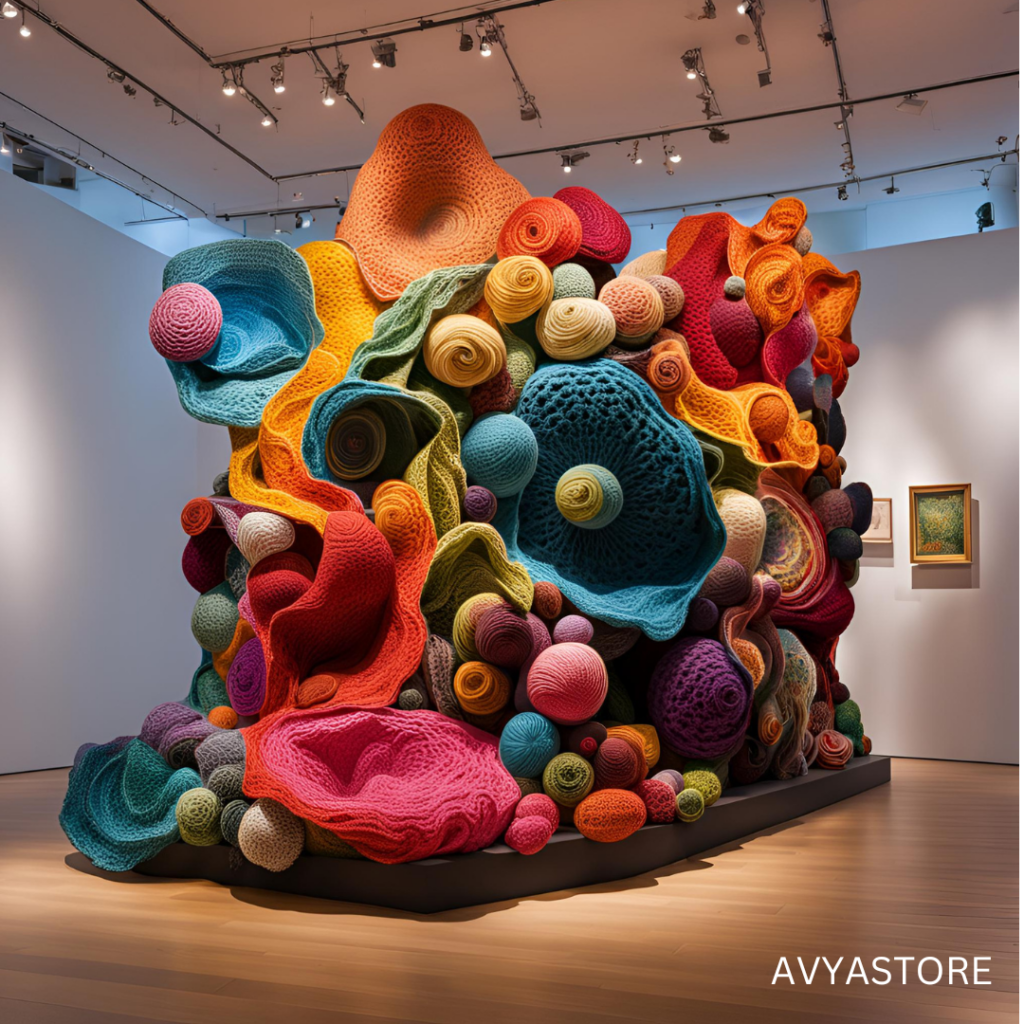
Rise of Crochet as Art
Crochet has long been regarded as a practical art for producing clothing or home furnishings. But in recent years, many craftspeople have come to see it as an artistic endeavor. Since crochet stitches can be tailored infinitely in shape and texture, it lends itself well to sculptural works. Whereas knitting and weaving lack the three-dimensional qualities of other textile art forms, their sculptural quality and free form molding through handicraft compensate for these deficiencies. With crochet, this plastic formation is essentially a natural byproduct.
It’s picked up big time. Crochet artists like Shauna Richardson, who innovated the term “crochetdermy” for her life-sized animal sculptures, or Olek, known for her gigantic installations made from yarn, have managed to make crochet an impactful medium for telling stories through their art. Richardson in particular gives taxidermy a facsimile look, using yarn, as she crochets remarkably precise and large animals, matching craftsmanship and the point of nature and art. Meanwhile, Olek covered buildings and sculptures with colourful crochet. She’s overcome what was in the past considered to be an unbridgeable chasm between public art and craft.
Crochet artists in the book reveal to the world that crochet is not just practical-making something, but powerful and profound art.
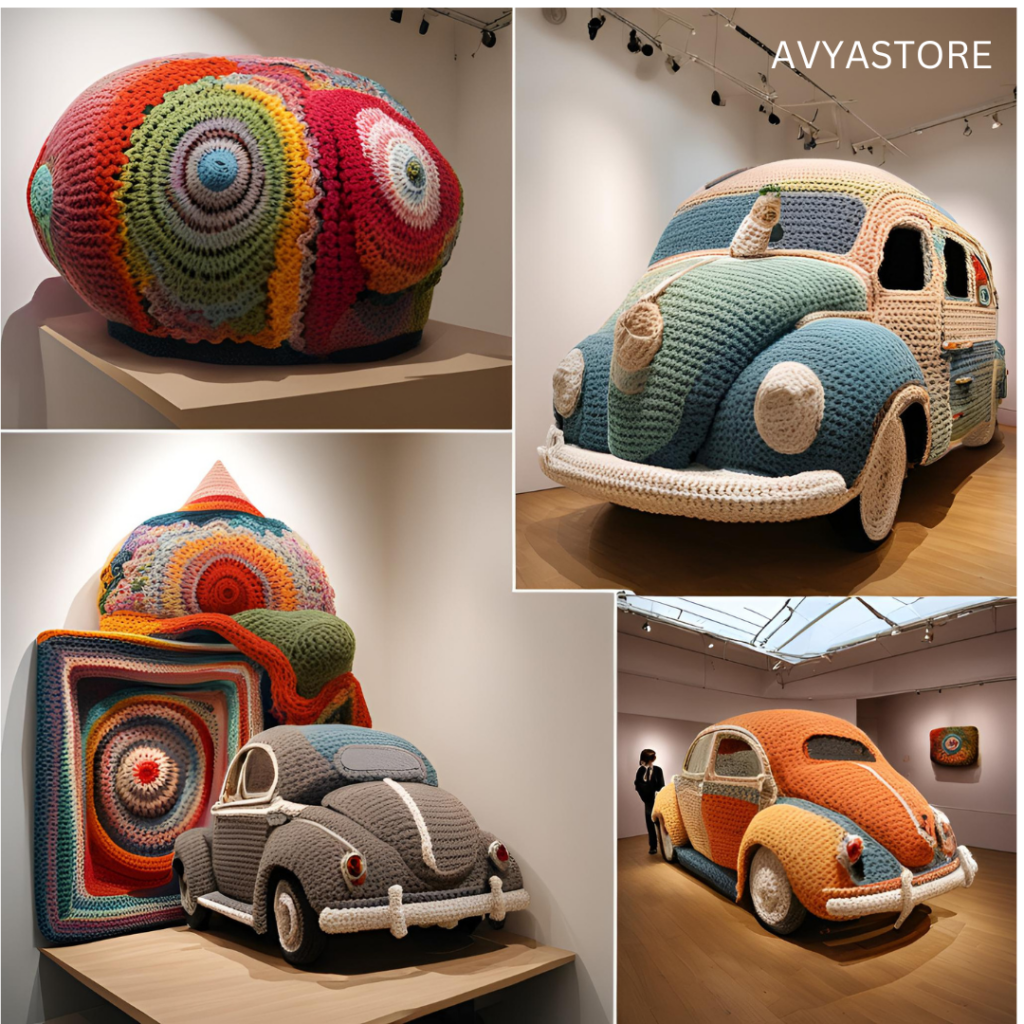
3D Crochet Sculpture Art
But at the heart of 3D crochet sculptures lies amigurumi, or a Japanese crochet technique dedicated to very small, stuffed creatures. Traditionally, amigurumi features cute, cartoonish characters, but the basic principles of this technique can be applied to more complex, realistic forms.
There’s how often 3D crochet sculptures come alive for me:
1. Concept and Design
Even before artists take up the crochet hook, they conceptualize or draw the thing they’re interested in making. Compared to other similar traditional crochet projects, which lie flat and are generally structured around regular shapes, 3D crochet calls for much more of a sculptural approach. Artists have to think about every angle – how it is going to be round, in its proportion, how it is going to stand or balance on its own.
Some of the artists will choose to paint abstract pieces, where the yarn is prominent in its texture and color; others will strive towards hyper-realism, which calls for proper planning.
2. Yarn and Hook Choice
Not all yarns are equal for 3D crochet sculpture. The weight, texture, and elasticity of the yarn that you use would greatly affect your final piece. Worst yarn is used for soft, fluffy pieces or tight stitches with good definition in amigurumi.
Also, here the size of the hook comes into play. The smaller the hook is the tighter stitches will be, and it will make the sculpture sturdier, closer in definition, the larger—the farther apart the stitches are, and this results in a looser, more flexible yarn.
3. Shaping and Stitching
Probably the most important thing, when it comes to 3-D crochet sculptures, is the shaping of the sculpture. Obviously, this is unlike other crochet patterns where every row must be uniform. Increasing, decreasing, and short rows are used for curves of the corners and to add dimension to the work. It is what allows you to sculpt as you crochet that makes the medium so wonderfully versatile.
For instance, you could have a round shape-head or body-by increasing stitches evenly across several rows to form a spherical shape and then gradually decreasing at the end to close it off. Arms or other appendages could be created by crocheting a cylinder or tapering the shape with careful decreases of stitches as you go.
Most work using wire armatures within their sculptures for added support or to hold a pose, while others rely on the stitches and stuffing for it to hold form due to the tightness.
Stuffing and Detailing
Most 3D crochet sculptures are full of polyfill, this is the light and moldable filling that adds the volume to the object. Other artists may use different materials than polyfill, even reusing fabrics, plastic bags, or beans and rice to make theirs more heavy and textured.
The final touches—I especially enjoy adding eyes or noses or texture on a surface—are done in embroidery, felting, or additional layers of crocheting. Some artists add other materials such as beads, metal, or wood to embellish the sculpture.
Inspiration: 3D Crochet Artists
Many prolific crochet artists are bringing unique visions to life with 3D crochet sculptures. Among those are the following :
•Shauna Richardson: Her life-sized “crochetdermy” animal sculptures blur the line between crochet and traditional forms. Her realistically created works show the possibility of having minutely detailed input.
•Olek: Born in Poland, she is a renowned artist who produces colossal installations using crochet. Olek basks entire rooms, statues, or even a train in colorful yarn, making crochet a form of public, immersive art.
• Pat Waller: Pat Waller is another crocheter, but in this case, produces much more surreal and darkly comedic work. Pat Waller utilizes crochet to aim at more serious or sinister themes while simultaneously subverting the soft, often playfully loose texture of crochet.
• Emily Barletta: Emily Barletta creates very abstract crochet works and frequently provides insight into biological forms or intricate patterns from nature. In the crochet pieces depicted above, she shows how crochet can provide an artistic path to explore texture and form in a free-form manner.
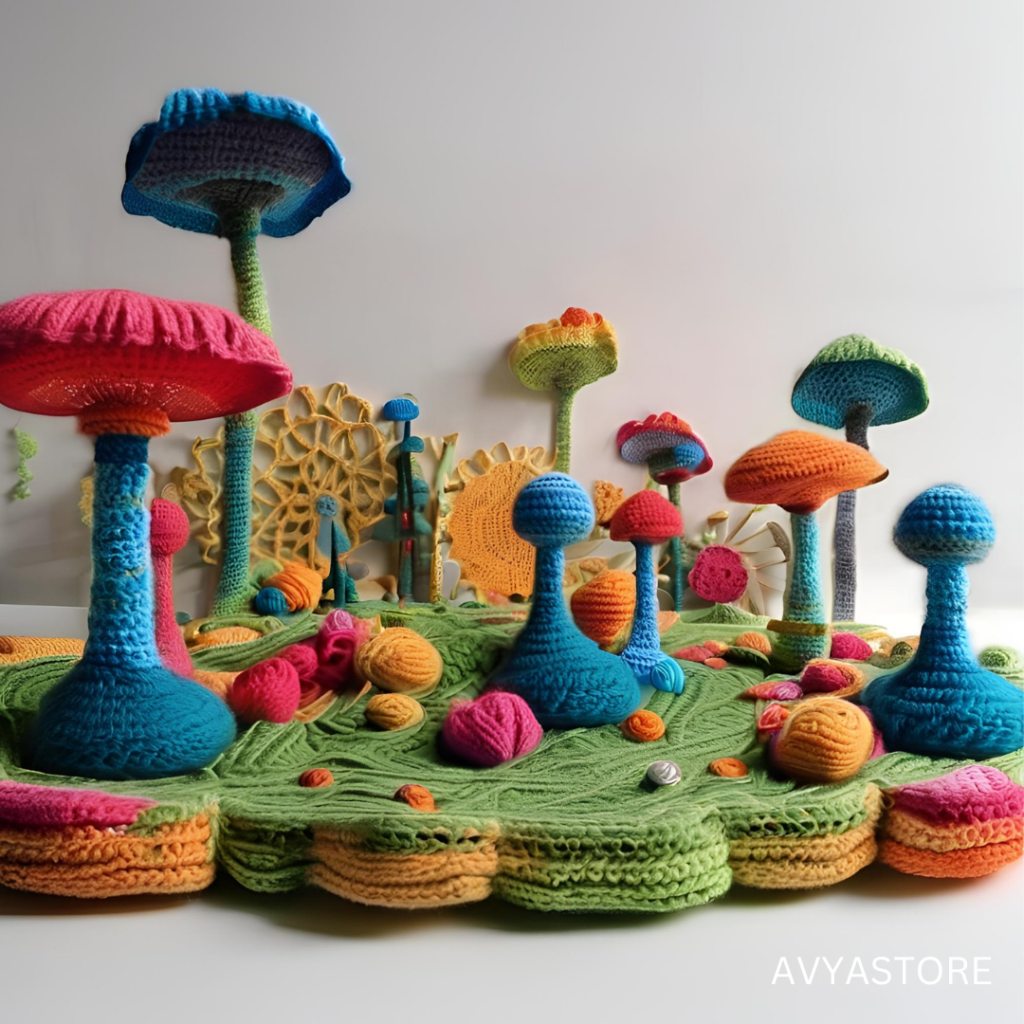
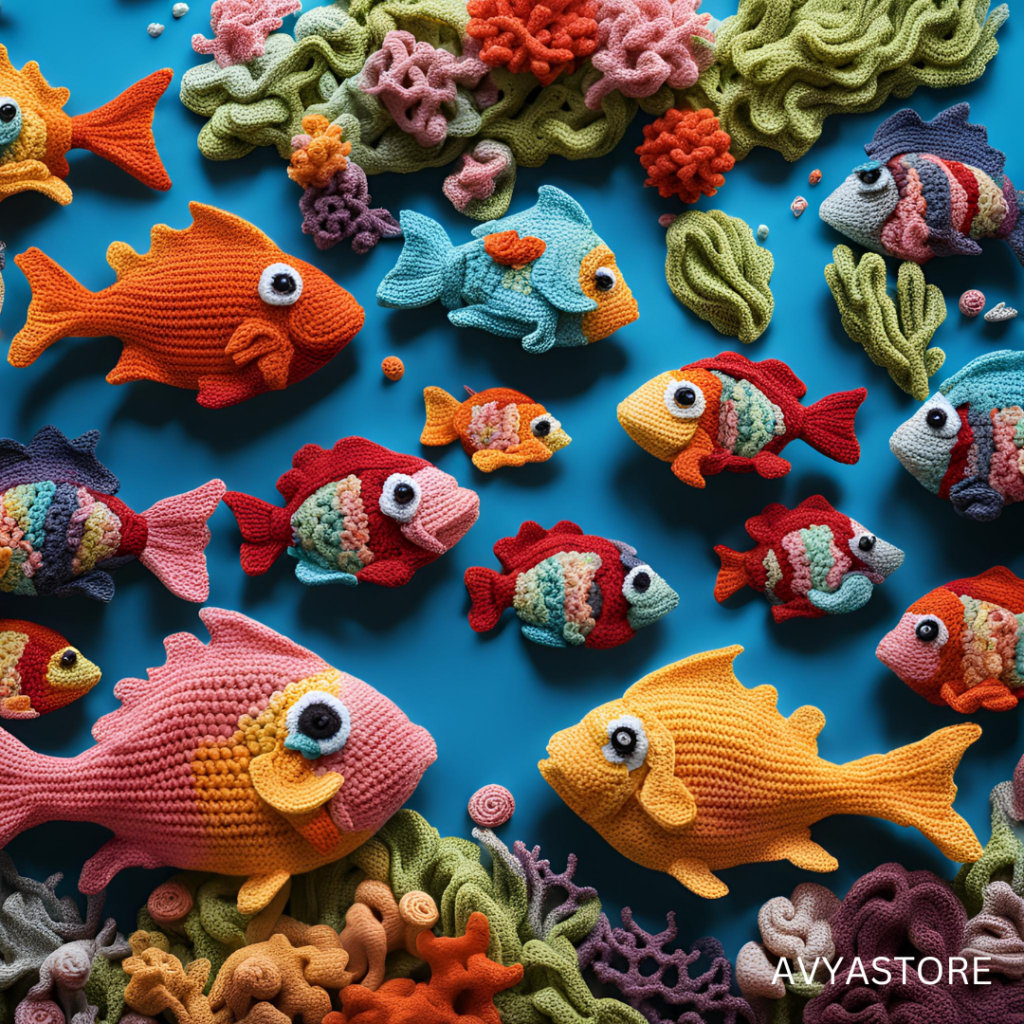
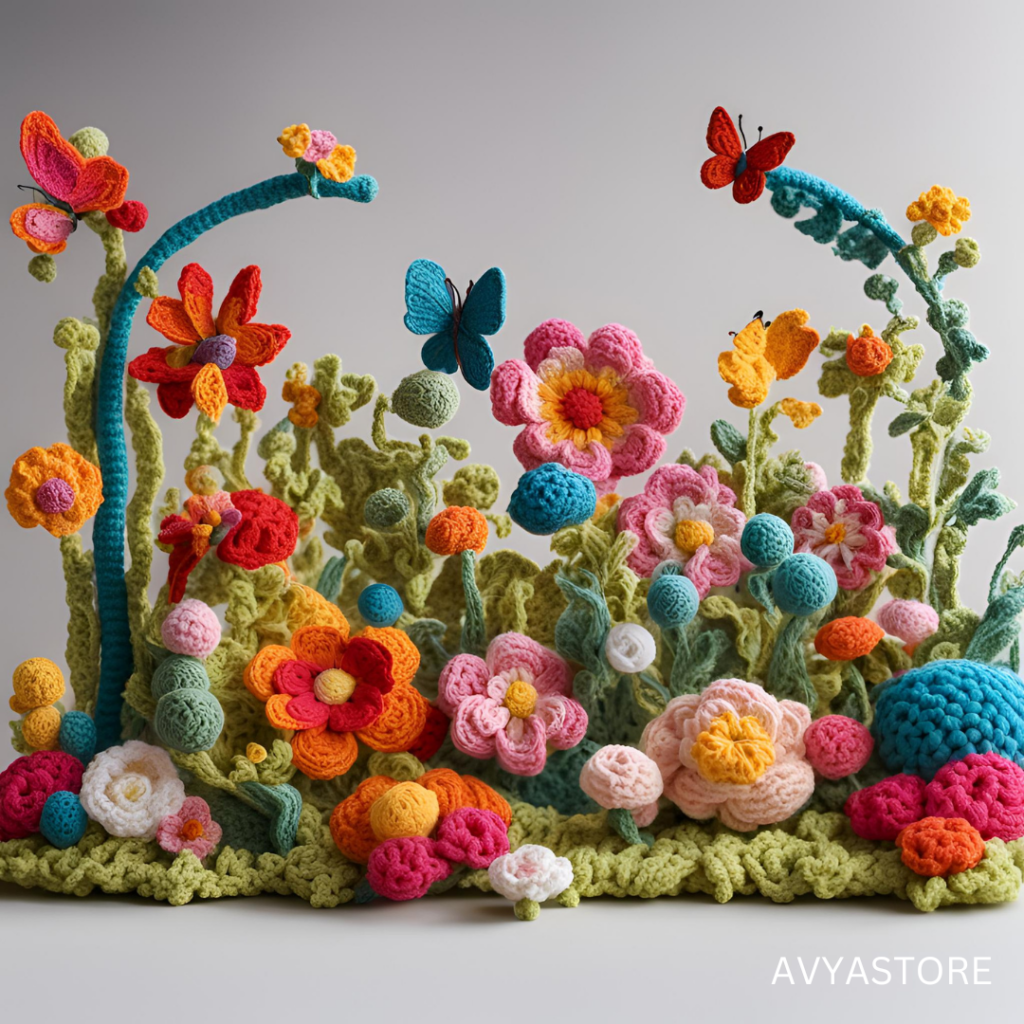
How to Get Started with Your Own Personal 3D Crochet Sculpture
If you feel the creative urge to try your hand at making some of your own personal 3D crochet sculptures, here is how you may get started:
1. Start Small: Practice basic amigurumi designs so you get a feel for the process of creating basic structures. Once you get a feel for the basic structure-making process, you can then go on to the more complicated designs.
2. Play with Yarn and Texture, including using regular or non-traditional materials. The fiber of your yarn can greatly contribute to the finished sculpture.
3. Practice Shaping: Shaping is absolutely key in 3D crochet. Learn how to increase, decrease, and use short rows to create curves and angles that will shape the desired form for your sculpture.
4. Add Your Own Flair: Now that you have the basics covered, begin coming up with your original patterns. Draw from nature, architecture, or abstract art, and just let your creativity shine with a crochet hook in hand.
Conclusion
The 3D crochet sculpture is indeed a bold new frontier within the realm of fiber arts. Whimsical animal, life-sized installation, abstract form-whatever medium artists choose, they demonstrate and prove how much yarn can do. With this newfound combination of traditional crochet techniques with that sculptor’s mind, you can turn simple yarn into that stunning, three-dimensional work of art.
So, what is the next project with crochet? Maybe it’s high time to say goodbye to clothing and accessories and start sculpting in yarn. Possibilities are endless!
This is not only a beautiful artistic 3D crochet sculpture blog post but also will be practical advice about how to start, so it will be helpful and interesting for any level of crocheters.

Be the first to comment